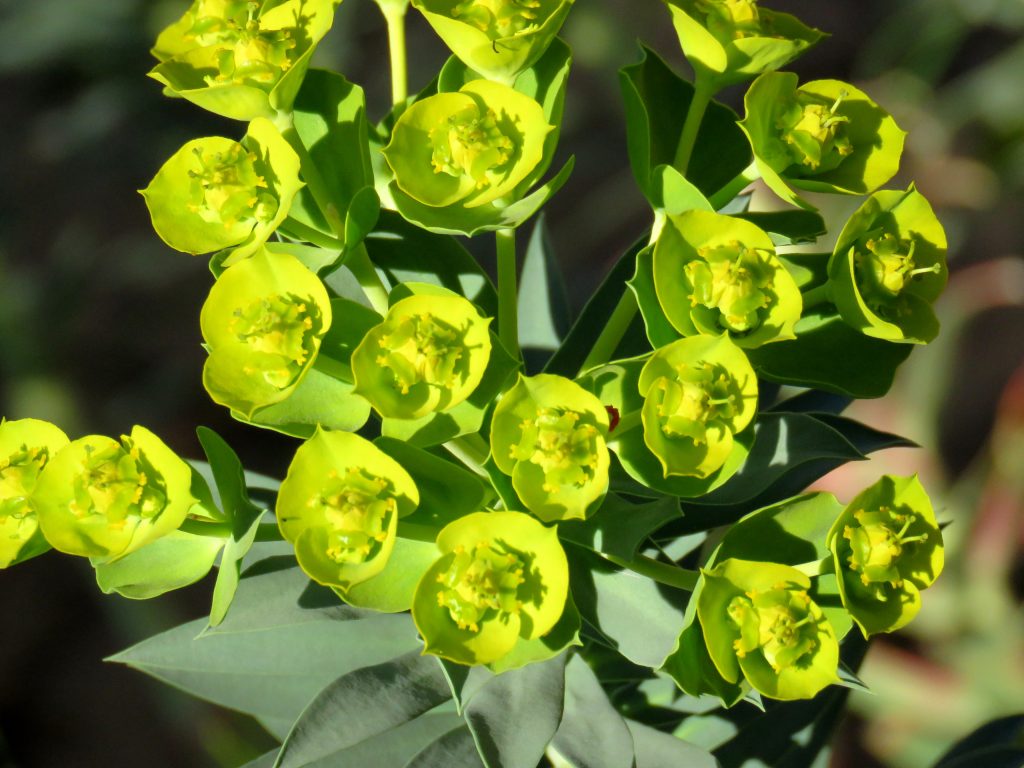Shamrocks Aren’t the Only Green Plant to Celebrate in March
I hear that wearing green will make you invisible to leprechauns so you can avoid being pinched. Some say it will bring you good luck. Even beyond March and St. Patrick’s Day, green is often used for interior decorating for its calming effect? You’ve likely heard about television guests waiting in the ‘green room’ to relax. It’s also been increasingly recognized that forests and outdoor green spaces alleviate symptoms of stress and anxiety while providing health benefits like lowering blood pressure and mental well-being.
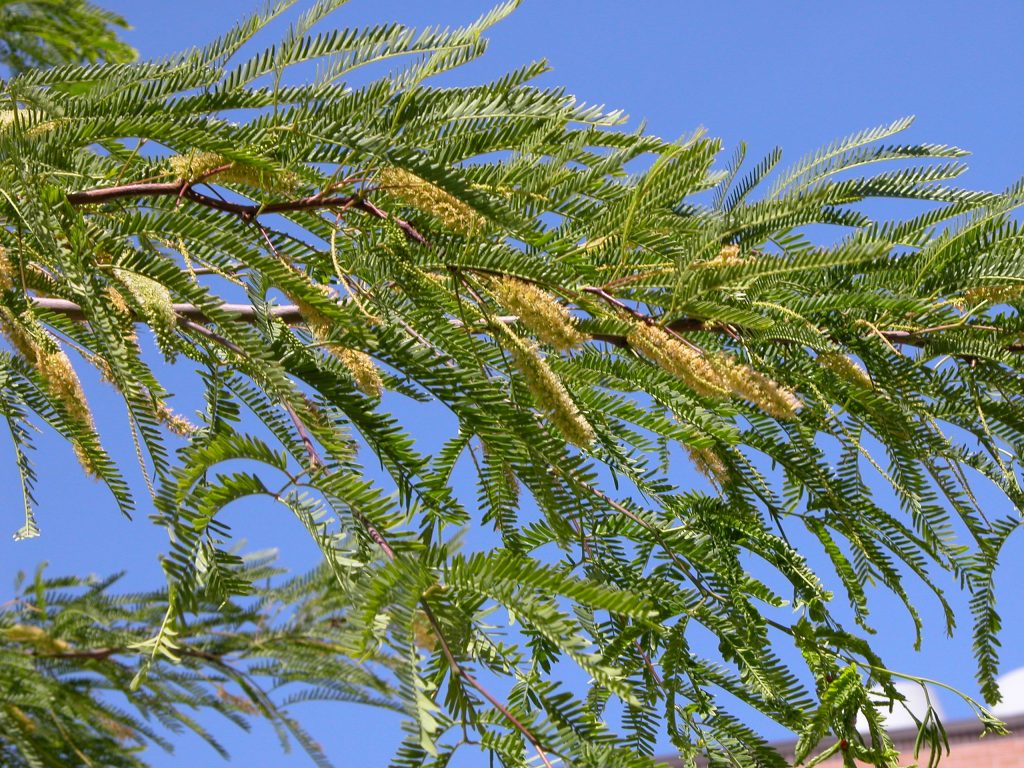
Of course, most of our plants are green barring a few colorful outliers like purple-leaf plum. While we often select plants in our landscape for their seasonal color, or for flowers that attract butterflies or pollinators, you may find great value in a plant for its year-round green presence (and ha-ha, no, I hear you grass lawn fans, I’m talking functional, low-water use plants for your Xeriscape).
First, I have to say that one of my favorite greens that I look forward to each spring – in fact, typically by the end of March – is the fresh new green growth of leaves on a mesquite tree. But here’s a list of some of my favorite plants that are best known to show off their ‘green’ more than their other features like flowers, fruit, or fall color.
Mangle Dulce Translates to Sweet Mangroves
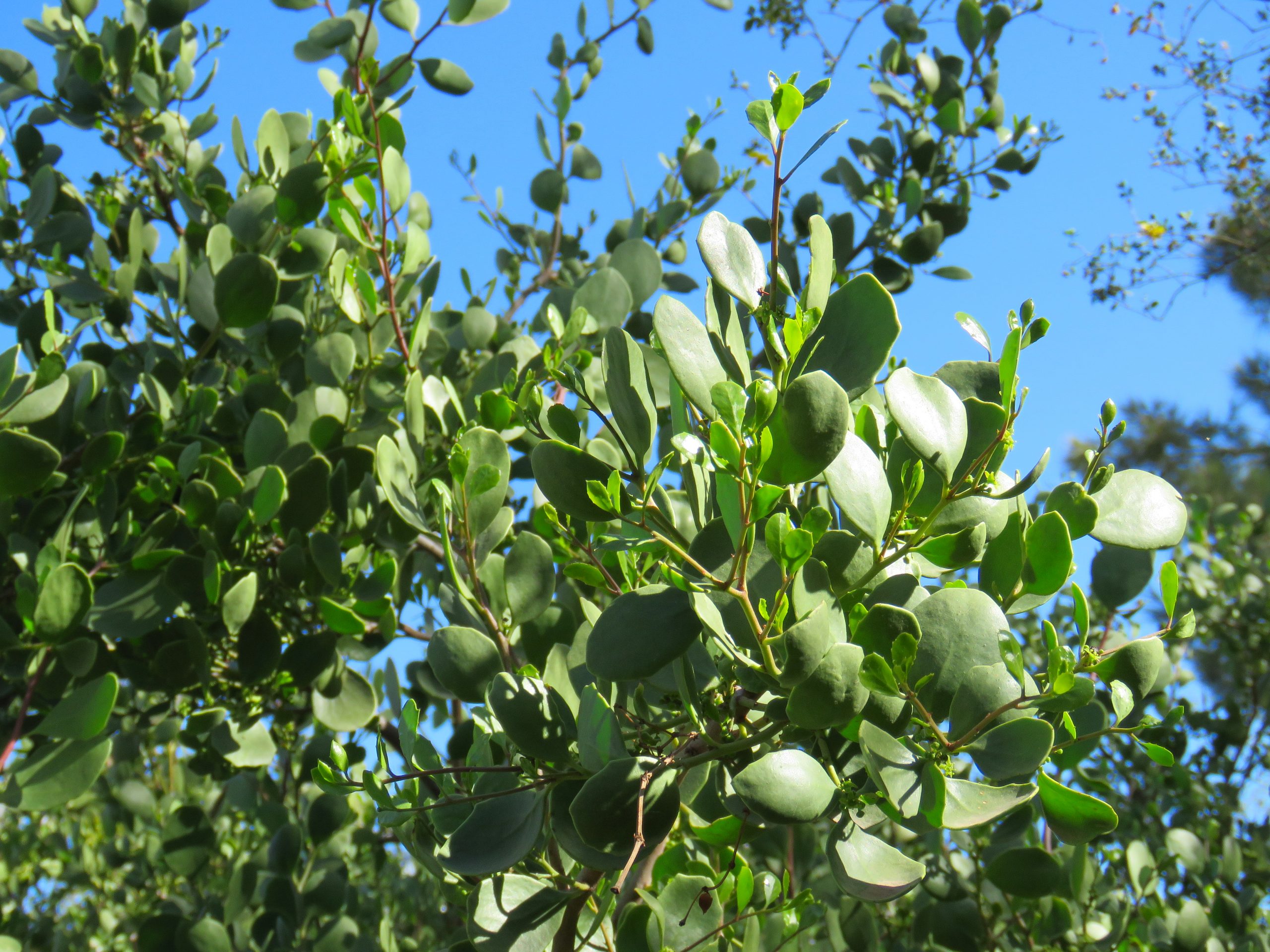
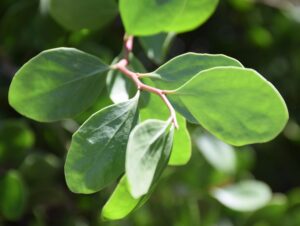
Maytenus phyllanthoides or Mangle Dulce is one of my favorites. It’s an evergreen, mounding shrub that will grow to about 4’ tall and 3’ wide, though it can get larger. The oval, bright green leaves are thick and leathery – it actually resembles a Jojoba but with green instead of gray-green leaves. It will take full sun with no problem but also does well in part shade. If you’ve never heard of it, you’re not alone. This shrub is likely not super popular because it grows slowly. But that also means that it is low litter and easy maintenance. Other valuable qualities about this plant are that it has no thorns, is highly salt-tolerant – think poolside planting. It provides great shelter for birds and butterflies for a wildlife-friendly landscape.
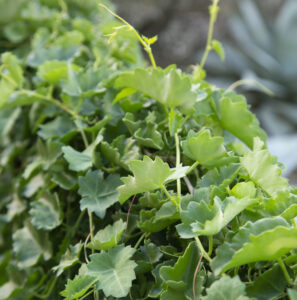
Grape Ivy is Made for Shade
Cissus trifoliata or Grape Ivy is an attractive ornamental vine that can get 15-30 feet in height and self-attaches with small tendrils. This vine has fleshy, dark green three-lobed leaves. This is a great plant for vertical spaces like a bare wall with a trellis. You can also consider it as a ground cover and allow it to scramble over rocks and boulders. It is adapted to low light but will grow more vigorously with more sun. Just be sure not to locate in super-hot, reflected sun areas. It is frost tender so will lose its leaves in winter but will leaf out quickly from the main stems in the spring.
Blue Euphorbia for Shades of Green
Euphorbia rigida or Blue Euphorbia is an evergreen, succulent-like perennial that grows in a low mound 2’ tall and 3’ wide. While I admit, the leaves have a distinctive desert gray-blue color, it’s the branch tips of chartreuse flower clusters (bracts) in late winter to early spring that put this on my ‘green’ list. In fact, I found a description for the plant that said it was “texturally and chromatically compelling.”
Use caution when cutting back old flower stems in summer as the milky sap can cause skin or eye irritation. This makes a great specimen plant but also works well massed in the landscape or even in containers. It is native to the Mediterranean, is easy-care, and is even known to repel gophers and other rodents – hence another common name is Gopher Plant.
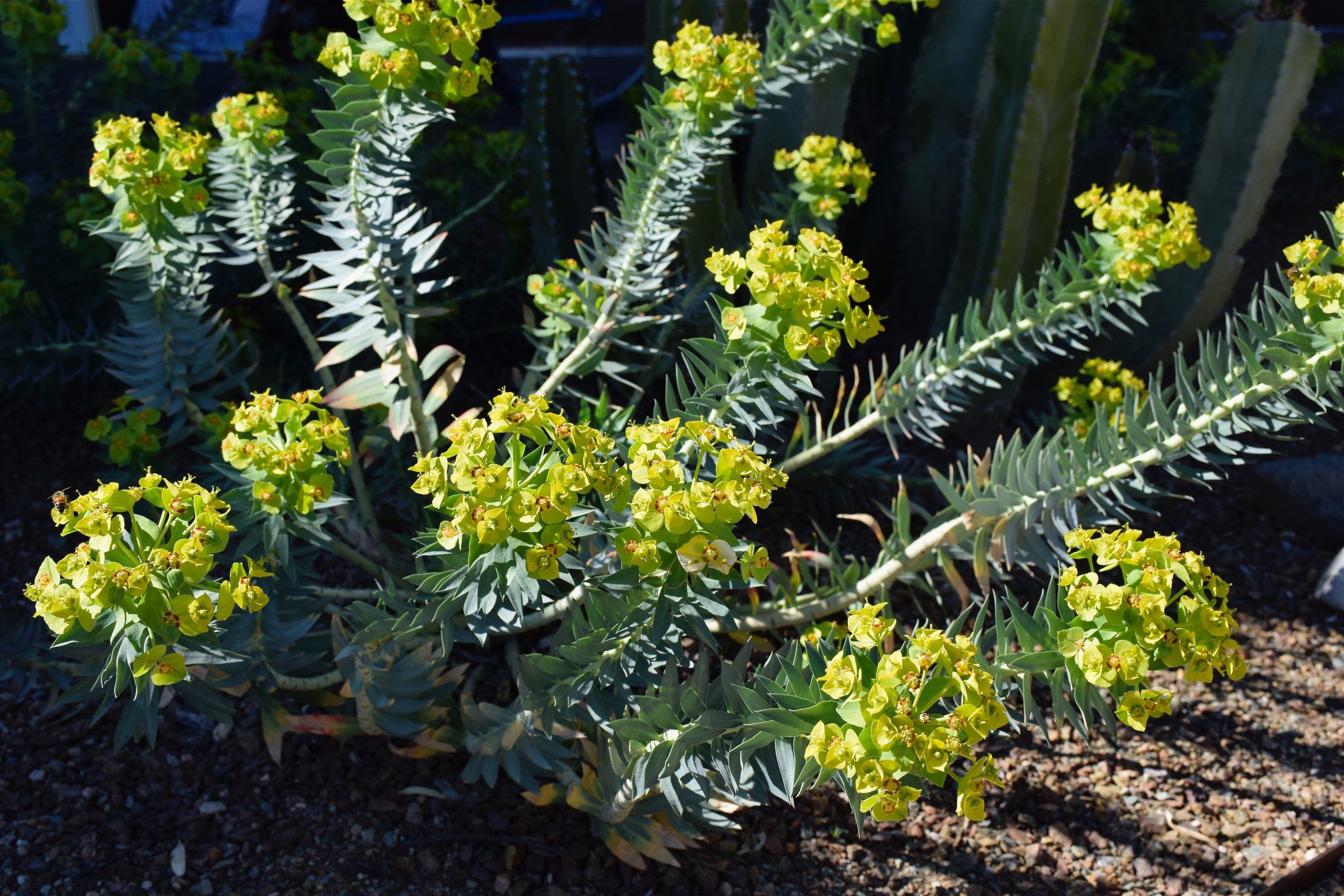
Honorable Mentions
While I tried to stick with plants that have green as their predominant attribute, I have to give praise to two other plants for their lovely display of green. Though both also have stunning displays of yellow flowers.
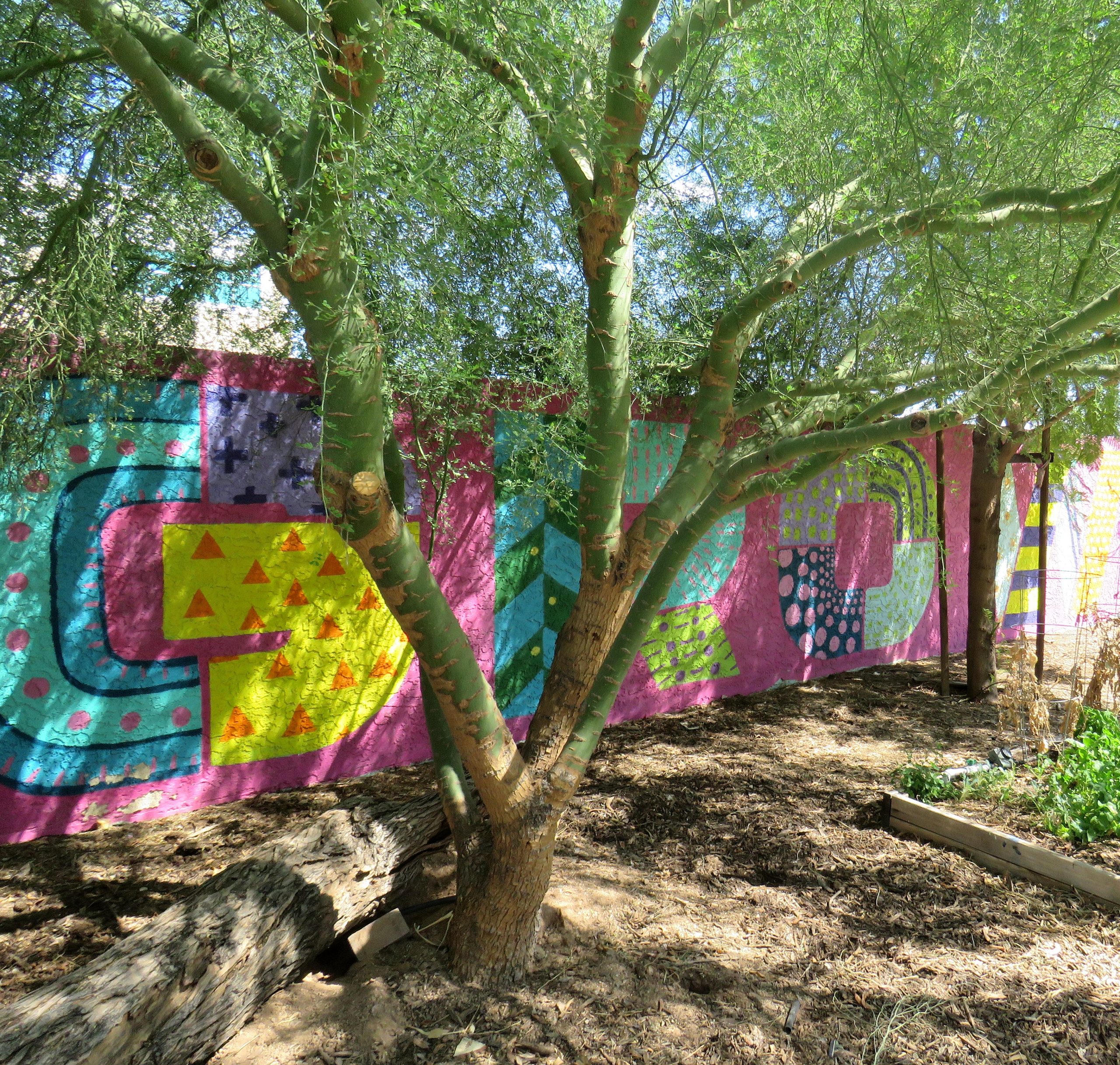
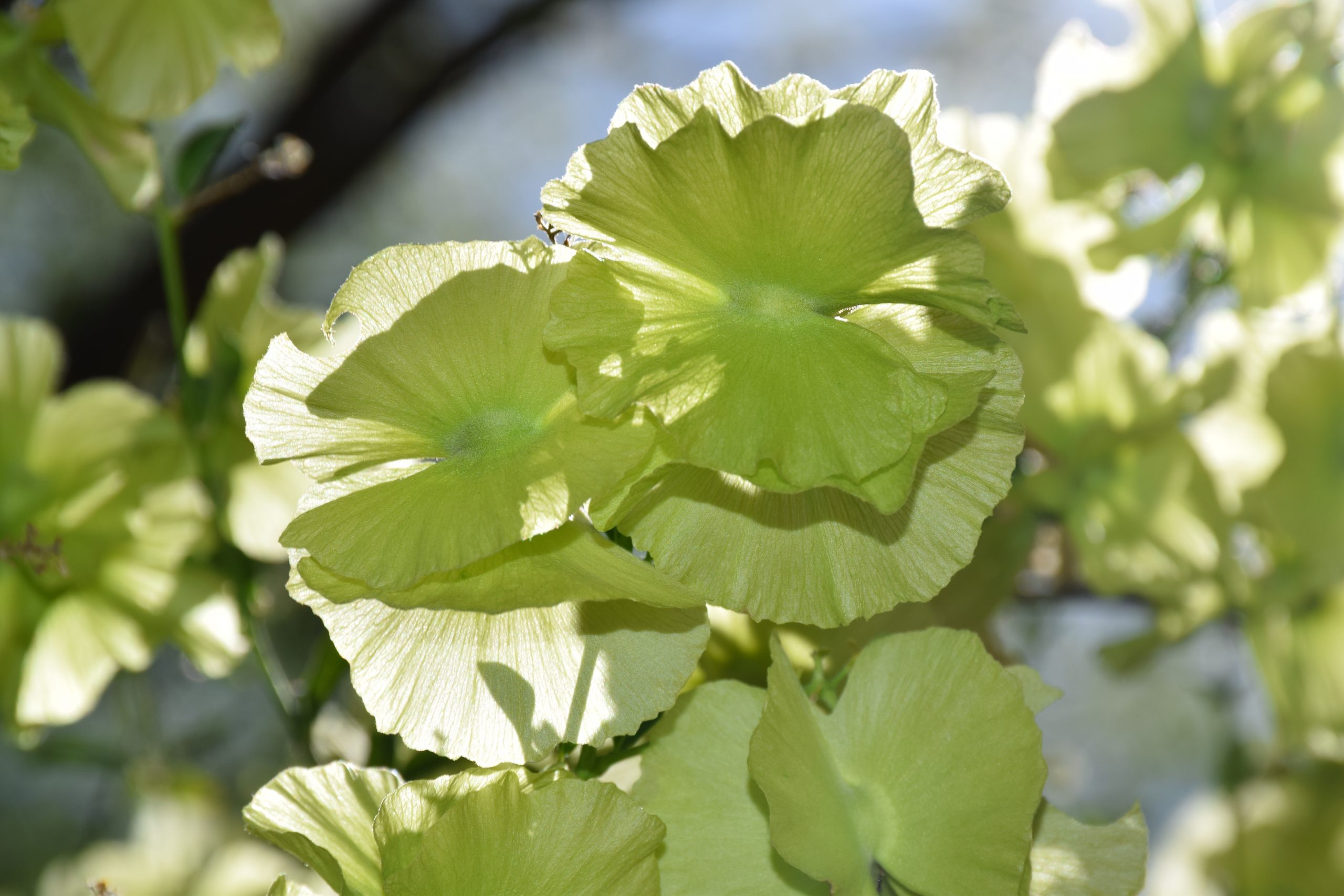
1. Yellow Orchid Vine (Callaeum macropterum aka Mascagnia macroptera): I must be smitten by the color chartreuse, as that is where this vine shines. It has showy yellow flowers, but it’s the winged papery seed pods that follow that bring in that lovely fresh green color.
2. Palo Verde (Parkinsonia spp aka Cercidium spp): It’s our state tree after all, the common name translates to ‘green stick’, and its green bark provides one of its most functional desert plant adaptations. During drought or dry conditions, the palo verde can sacrifice its leaves by dropping them and still photosynthesize. This way, it is able to make food from the bark. How unique and amazing is that?
Did you know that up to 70% of water use is outdoors? That is why we love desert plants and feature them each month. Learn more on our Arizona Low-Water-Use Plants page. Visit our page on Choosing and Planting Low Water-Use Plants for tips on plant selection and how to plant properly. Also, be sure to read through all of our featured Plant of the Month blogs!
Donna DiFrancesco is a horticulturist and Conservation Coordinator with the City of Mesa, AZ, one of nineteen Water – Use It Wisely partners to offer water-saving advice and programs.


